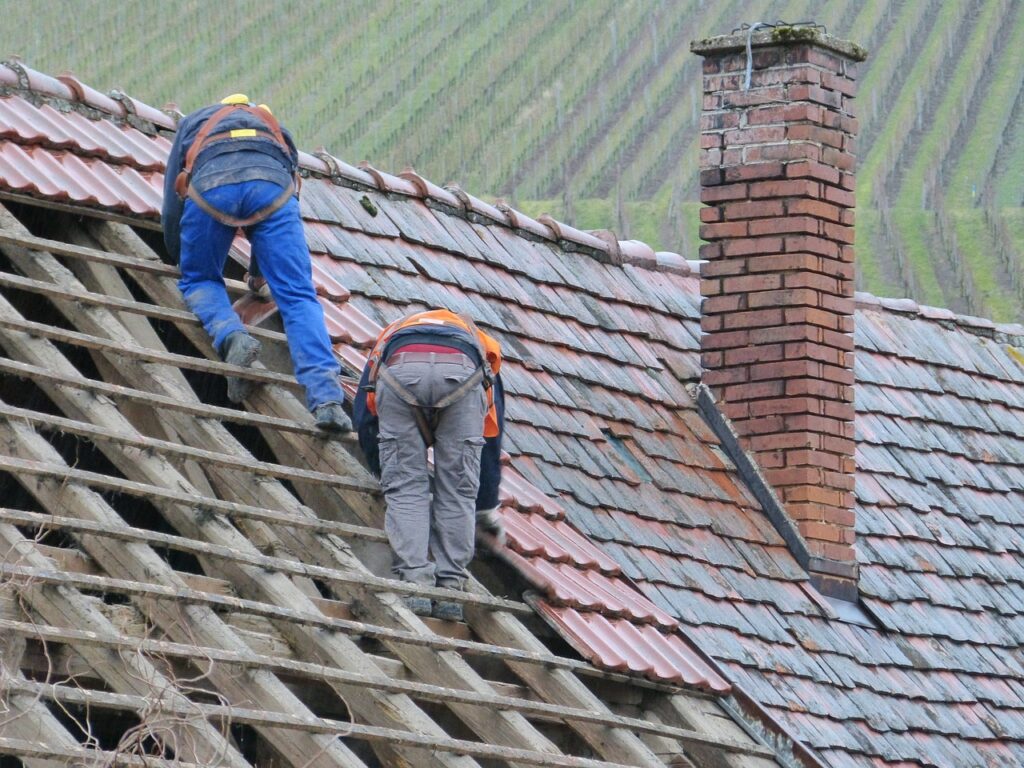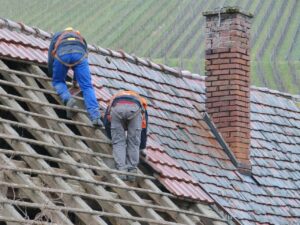How To Address Roof Damage From Trees And Foliage
Are you concerned about potential roof damage caused by trees and foliage? Don't worry, addressing this issue is easier than you may think! With a proactive approach and some simple maintenance tasks, you can protect your roof and prevent any costly repairs.
In this article, we will guide you through the steps to identify and address roof damage caused by trees and foliage. First, we will teach you how to spot signs of damage, such as cracked shingles or sagging areas.
Next, we will explain the importance of trimming and pruning trees near your roof to prevent branches from falling and causing harm. We will also discuss the installation of protective measures, like gutter guards and screens, to keep debris from accumulating and clogging your gutters.
Finally, we will emphasize the importance of seeking professional help and inspection to ensure that your roof remains in top condition. By following these guidelines, you can keep your roof safe and enjoy the beauty of trees and foliage without worrying about potential damage.
Identifying Potential Roof Damage from Trees
As you stroll through your yard, beware of the towering trees that loom overhead. Their branches reach out like mischievous fingers, waiting to cause potential damage to your vulnerable roof. Identifying signs of roof damage caused by trees is essential to prevent further issues.
Keep an eye out for fallen branches or leaves on your roof, as they can clog gutters and trap moisture, leading to roof deterioration. Notice any cracked or missing shingles, as this may indicate impact damage from tree limbs. Look for sagging or dipping areas in your roof, which could be a sign of structural damage caused by the weight of overhanging branches.
Additionally, be aware of any tree limbs that are in direct contact with your roof, as they can scrape and wear down roofing materials over time. Regularly inspecting your roof for these signs can help you address potential damage from trees before it becomes a bigger problem.
Trimming and Pruning Trees Near Your Roof
To ensure the safety of your home, it's crucial to regularly trim and prune the tall, overgrown trees near your house. Overgrown branches can pose a serious risk to your roof, especially during storms or strong winds. By trimming back these branches, you can prevent them from falling onto your roof and causing damage.
Start by identifying any branches that are close to or touching your roof. Use a ladder and pruning shears to carefully trim these branches, making sure to cut them back to the branch collar. It's important to avoid cutting too close to the trunk or leaving stubs, as this can lead to further damage.
Additionally, consider hiring a professional arborist to safely trim any large or hard-to-reach branches. Regularly maintaining your trees will help protect your roof and keep your home safe from potential damage.
Installing Protective Measures
Make sure you safeguard your home by installing protective measures that can shield your property from potential hazards.
One effective way to protect your roof from tree damage is by installing gutter guards. These guards prevent leaves, twigs, and other debris from clogging your gutters, which can lead to water overflowing onto your roof and causing damage.
Additionally, you can consider installing metal or plastic mesh screens over your roof vents to prevent leaves and small branches from entering and potentially causing blockages or damage.
Another option is to install a roof protection system, such as metal or rubber strips, along the edge of your roof to prevent tree branches from scraping against it during heavy winds.
By taking these proactive steps, you can greatly reduce the risk of tree-related damage to your roof.
Clearing and Maintaining Gutters
Don't forget to regularly clear and maintain your gutters to ensure they're free from debris and functioning properly. When trees and foliage are near your roof, leaves, twigs, and other debris can accumulate in the gutters, causing clogs and preventing water from draining properly.
This can lead to water overflow, which can damage your roof and the structure of your home. To clear your gutters, start by using a ladder to safely access them. Use a small trowel or scoop to remove any debris, and then flush the gutters with water to make sure they're fully clear.
It's also important to check for any loose or damaged parts and make repairs as needed. By regularly clearing and maintaining your gutters, you can prevent roof damage and ensure the longevity of your home.
Seeking Professional Help and Inspection
If you want to ensure the long-lasting integrity of your home, it's essential to seek professional help and have regular inspections carried out. Hiring a professional to assess the damage caused by trees and foliage on your roof is crucial.
They have the expertise and specialized equipment to identify any potential issues and recommend the necessary repairs or preventive measures. A professional inspection will not only determine the extent of the damage but also provide you with a detailed report and cost estimate.
This information will help you make informed decisions about the best course of action. Remember, addressing roof damage promptly can prevent further deterioration and more expensive repairs down the line. So, don't hesitate to reach out to a reputable roofing professional to ensure your home's safety and longevity.

Conclusion
In conclusion, addressing roof damage from trees and foliage is essential for maintaining the integrity of your roof. By identifying potential damage, trimming and pruning trees, and installing protective measures, you can prevent costly repairs and prolong the lifespan of your roof.
However, if you're unsure or overwhelmed, it's always best to seek professional help and inspection to ensure the safety and stability of your roof.
Keep your roof in top shape, and it'll continue to protect you and your home for years to come.

